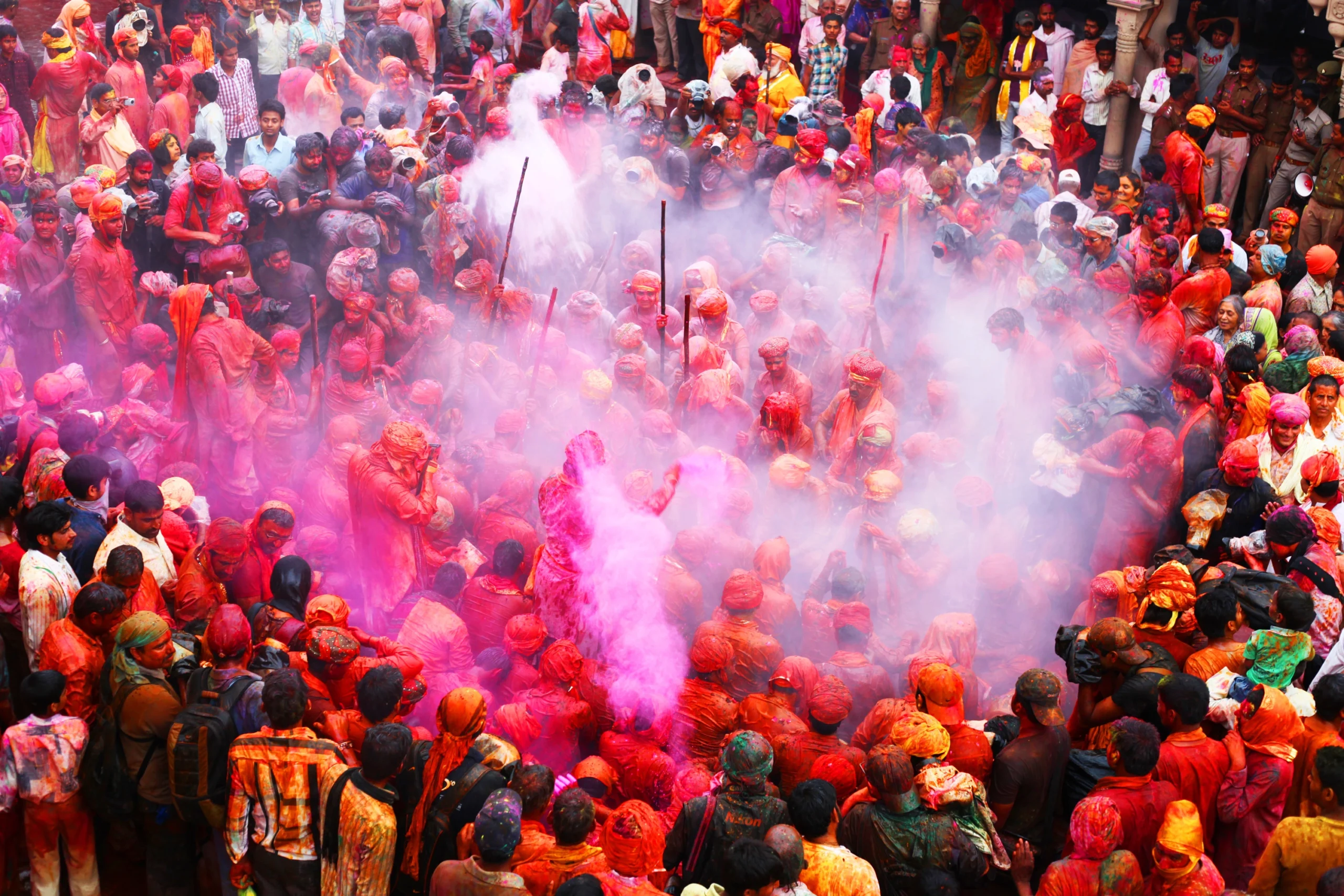Introduction
Holi festival, also known as the festival of colors, is one of the most vibrant and joyous festivals celebrated in India and other parts of the world. This festival brings people together, regardless of their age, caste, or gender, to celebrate the arrival of spring, harvest, and the victory of good over evil. In this article, we will explore the mythology, rituals, and traditions associated with Holi festival.
The Mythology Behind Holi Festival
Holi festival has deep roots in Hindu mythology and is celebrated in honor of the divine love between Radha and Krishna. However, the festival is also associated with the story of Holika Dahan, which symbolizes the victory of good over evil.
The story of Holika Dahan goes back to the time of Hiranyakashipu, a powerful demon who wanted to be worshipped as a god. He had a son named Prahlada, who was a devoted follower of Lord Vishnu, much to the displeasure of his father. Hiranyakashipu tried several times to kill his son, but Lord Vishnu always protected him.
Finally, Hiranyakashipu asked his sister, Holika, to help him kill Prahlada. Holika had a boon that made her immune to fire. She convinced Prahlada to sit on her lap in a fire, but the plan backfired. As soon as the fire was lit, Holika was burned to ashes, while Prahlada was unharmed due to his devotion to Lord Vishnu.
This story is celebrated through the lighting of bonfires on the eve of Holi, known as Holika Dahan. The bonfires symbolize the burning of evil and the triumph of good over evil.
Rituals and Traditions
Apart from Holika Dahan, there are several other rituals and traditions associated with Holi festival, such as:
- Lathmar Holi: This tradition is followed in Barsana, a town near Mathura, where Radha was born. Women beat men with sticks, and men defend themselves with shields, all in the spirit of fun.
- Dahi Handi: This tradition is followed in Maharashtra, where a group of young men forms a human pyramid to reach a pot of curd hung high above the ground. The team that breaks the pot gets a prize.
- Thandai and Gujiya: These are traditional delicacies prepared during Holi festival. Thandai is a refreshing drink made with milk, nuts, and spices, while Gujiya is a sweet dumpling filled with khoya and dry fruits.
Conclusion
Holi festival is more than just a celebration of colors. It is a celebration of the victory of good over evil, the arrival of spring, and the harvest season. Through the stories of Prahlada, Hiranyakashipu, Radha, and Krishna, we learn about the power of faith, devotion, and love. So, let us celebrate this festival with joy, positivity, and unity, and spread the message of love and happiness to everyone around us.
FAQs
Q. What is Holika Dahan? A. Holika Dahan is a ritual that takes place on the night before Holi, where people light bonfires to symbolize the victory of good over evil. It is named after Holika, the sister of demon king Hiranyakashipu, who tried to kill his son Prahlada but was burned to death in the process.
Q. Who is Prahlada in Hindu mythology? A. Prahlada was a young prince who was a devotee of Lord Vishnu, much to the dismay of his father, demon king Hiranyakashipu. Hiranyakashipu tried to kill Prahlada several times, but he was always protected by Lord Vishnu. Eventually, Prahlada’s devotion to Vishnu led to the downfall of his father and the victory of good over evil.
Q. Why do people throw colors during Holi? A. The tradition of throwing colors during Holi is said to have originated from the love story of Radha and Krishna, where Krishna playfully threw colors on Radha and the other gopis. It has since become a symbol of love, joy, and the celebration of spring and harvest.
Q. What is Lathmar Holi? A. Lathmar Holi is a unique celebration of Holi that takes place in the town of Barsana in Uttar Pradesh, India. Women from Barsana playfully beat men from the nearby town of Nandgaon with sticks, symbolizing the role of the gopis in beating Krishna with sticks when he playfully teased them.
Q. What is Dahi Handi? A. Dahi Handi is a popular ritual that takes place during the festival of Janmashtami, which celebrates the birth of Lord Krishna. It involves forming a human pyramid to break a pot of curd that is tied high up in the air, symbolizing the mischievous nature of Krishna as a child.

2 thoughts on “The Mythology Behind Holi Festival”